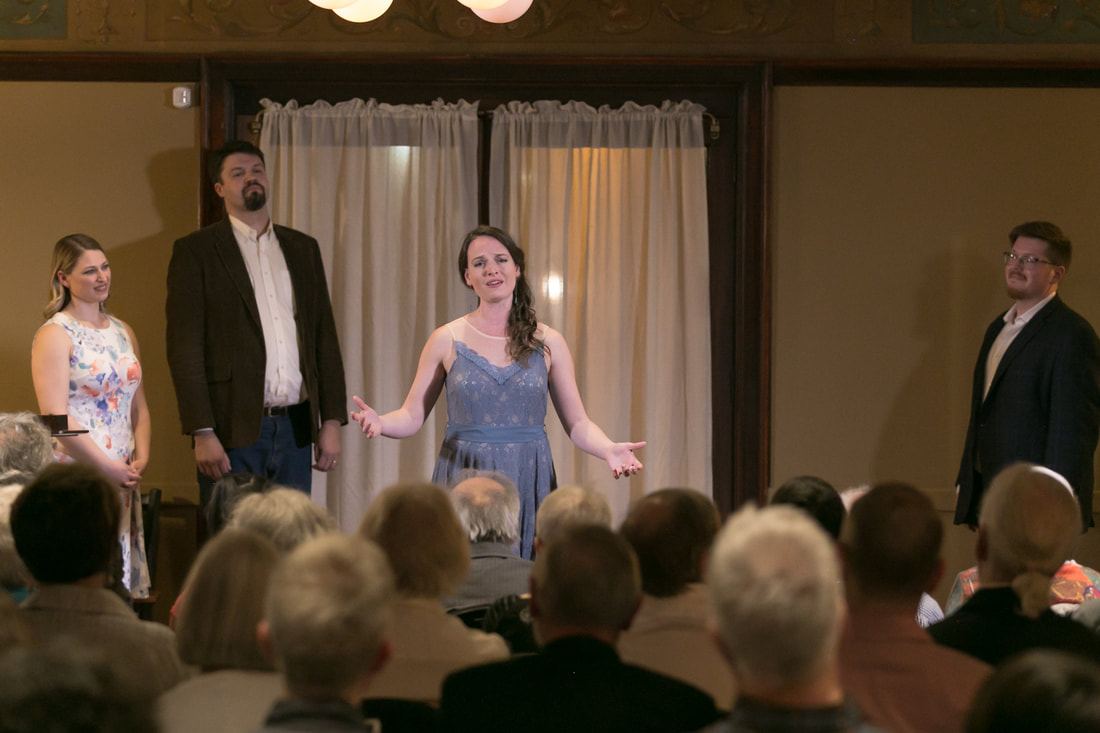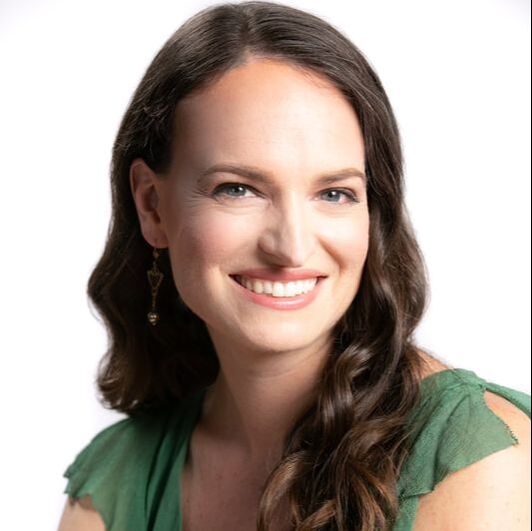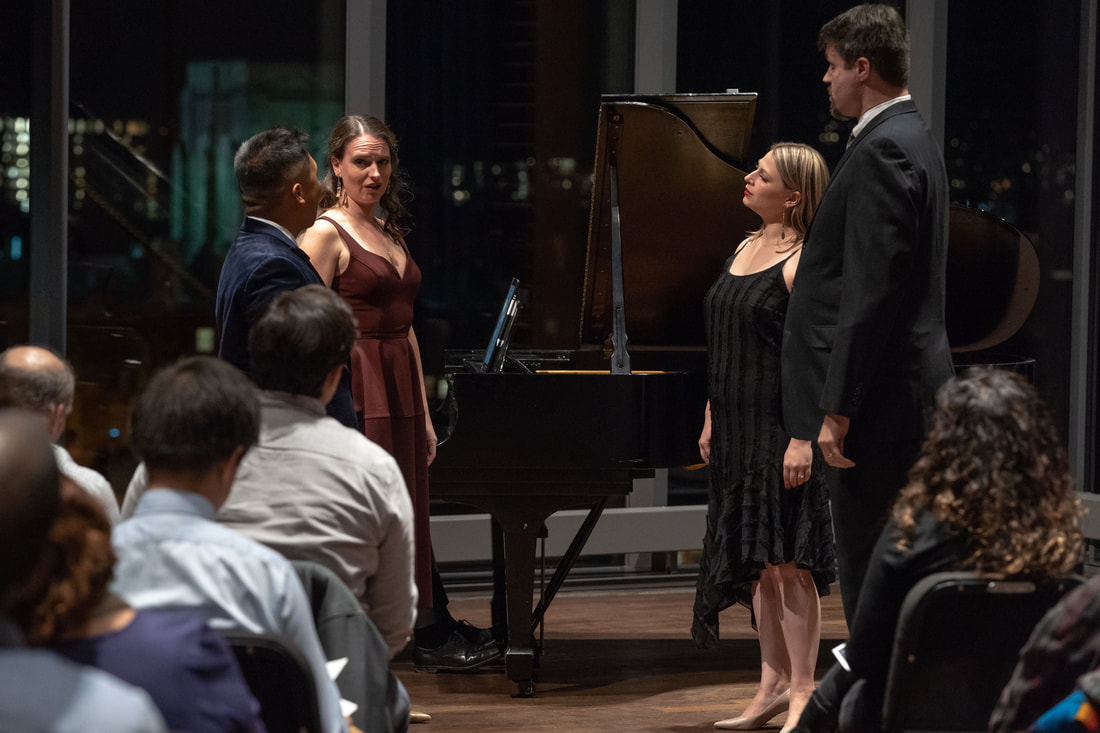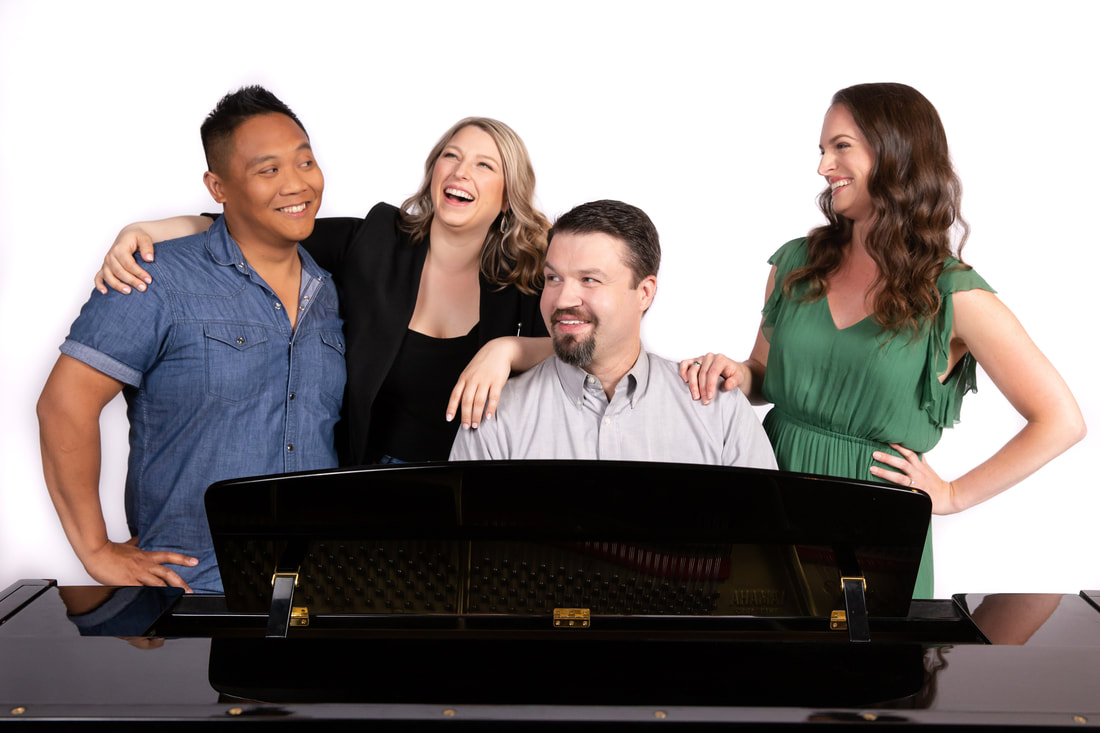|
We are connected to one another, whether we like it or not. We are, as the Reverend Dr. Martin Luther King, Jr. wrote, “caught in an inescapable network of mutuality, tied in a single garment of destiny. Whatever affects one directly, affects all indirectly.” While it may not always feel like it in American society right now, this messy conglomeration of people with different cultures of origin and values is still one (unruly, intersectional) body. I’ve thought a lot about this interconnectedness while reflecting on "Love Knows not ‘Mine’ or ‘Thine’,” Wayland Rogers’ setting of Christina Rossetti from the ensemble’s 2018 commission, I-Thou. Traveling through this song cycle that investigates so many different human relationships, we arrive at this final movement that celebrates sharing and oneness. I’ve needed to let this song wash over me, and to marinate in its message this week. We are connected. The movement begins with each voice on its own, a capella, calling out “in truth” - perhaps competing individual truths? - but then joining in one unison “truth” to state that “love knows not ‘mine’ or ‘thine’.” The voices move together in homophonic, simultaneous rhythm, while keeping consonant harmonies that make the music rich. All are together as one, while keeping their individual range and color. As the poem continues to refer to “both of us,” and “the love which makes us one,” the voices take their own versions of the same phrase while the music swells and grows in volume and range, until the four singers come back to unison - truly one. The final note rings in the air over an open, repeating pattern in the piano that feels like a sonic breath of fresh air. Openness, freedom, and unity in sound, as well as in text, to culminate the whole song cycle in “the love that makes us one.” After a cycle investigating conflict, dissonance, sarcasm, humor, beauty, and pain, we end up here: in harmony, through love. Thanks for the reminder, Wayland. Here’s to the work of (messy, difficult, worthwhile) love.
1 Comment
Many singers don’t regularly get to make chamber music in its purest form. More often, vocalists are either soloists - one individual soaring over other instruments and voices - or choristers - tasked with blending into a large cohesive sonic whole. While both of these singing arenas demand expert applications of vocal artistry (and which all four of us also love to do!), there is something uniquely special about vocal chamber music. In my former musical life as a violist, chamber music was by far my favorite means of music making. Playing in an orchestra was exhilarating, but you could barely hear the viola part in the hall much of the time (cue the viola jokes now). Conversely, I missed the collaborative process of musical interplay when working on solo works, and there aren’t many really excellent viola pieces in the standard student repertoire (cue more viola jokes). But playing in a string quartet? Every note I played really mattered. The works were breathtaking. Constant eye contact and breathing together with the violins and cello kept us in active communication through each moment. We got to make real artistic decisions - not just following a conductor’s lead - and we got to make them collectively. Each person had to be both soloist and collaborator to the fullest extent of their abilities. It was bliss. After realizing during college that my musical life was shifting from being "a violist who sang" to "a soprano who played the viola," I didn’t initially realize what I was losing in this area. As a career in singing began to take form, I loved the opportunities to solo and was thrilled by singing in some phenomenal choruses, but I missed the interplay of chamber music. A couple of chamber choir experiences came close, but nothing was really like my viola experiences. Nothing, that is, until I joined Fourth Coast Ensemble. This group is special, and a rare experience to have as a singer. I get to make gorgeous music with colleagues who I genuinely admire, whose artistry continues to blow me away, and with whom I get to regularly collaborate in ways that make us each better. Each singer is unique, and we get to showcase that in our solo repertoire, but the total experience is greater than the sum of its parts. The challenge and pleasure of working on blend, matching one another’s phrases, vowels and cutoffs with exactitude, while also knowing that every note of every singer is vitally important? It takes everything I have and have trained for, and is the most joyous music-making I get to do. All of this leads us to Schumann’s “So war die Sonne scheinet,” the final movement of his grand Minnespiel song cycle for four voices. Schumann is a master composer of both lieder and instrumental chamber music (check out his String Quartet No. 1 in A minor - it’s a favorite of mine!), and it shows here. He asks the four singers to match one another in richly blended chords, and also gives each one the opportunity to stand out from the group. Plus it involves the additional bonus of a beautifully rich piano part, here expertly played by Fourth Coast board chair and regular collaborator Dr. Dana Brown. Think of it like a string quartet for voices. I hope you enjoy it as much as I do.
|
SUBSCRIBEAboutHello, and welcome to the blog! We are Fourth Coast Ensemble, Chicago's classical vocal quartet. Join a different member of our ensemble for insights into our favorite art songs, links to archival and new recordings, and reflections on why we value and continue to come back to this musical medium. We proudly present, your #artsongfix! Archives
June 2023
Categories
All
|






 RSS Feed
RSS Feed
